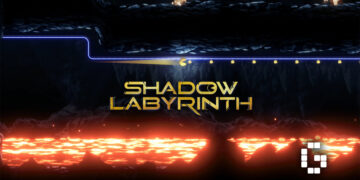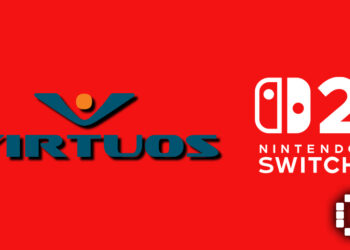It’s hard to think of a more iconic Japanese character than the Kamen Riders. These masked heroes have everything- interesting stories, cool costumes and most importantly, marketability. These guys are a powerhouse of merchandising going from TV shows to Movies, games and even fruit candies. Naturally, they’d have a healthy roster of videogames to support the IP, with the latest one being Kamen Rider: Memory of Heroez.
On top of that, the franchise’s introduction of new Kamen Riders gives them a healthy roster, with each one not being afraid to be a snapshot of the era they were created for.
Kamen Rider: Memory of Heroez is the latest of several video games featuring the iconic Tokusatsu heroes. The story takes place on Sector City, an island safely located outside of anywhere that might be referred to in mainline Kamen Rider canon. Shotaro, one half of the Kamen Rider Double, is investigating the island, guided by a mysterious robot named Ai. Along the way, he bumps into other playable Kamen Riders such as OOO (Pronounced O-zu) and Zero-One.
So how does the game actually play? Read on and find out:

Gameplay
In a nutshell, Memory of Heroez is a character action game that looks like a PS3 game but plays like a PS2. It’s visually not the best looking, with many of the environment assets looking generic and poorly textured. This is especially true of the City Sector and Desert Sector, since they’re such common environments it’s glaringly obvious how little work went into making the zones feel unique.
There’s also the game’s very dated presentation. Sometimes progression is signposted simply by having a trail of the game’s Enemy Codes in a straight line, making you feel like you were controlling Kamen Rider Bandicoot as you jog down a slope.
There’s also the game’s love of fading into short cutscenes to tell you a door is locked, as well as its love of side-objectives that take you out of the game. These plus the game’s slow-paced animations really make the game feel dated, and more often than not it feels like I’m playing a HD remaster of an older game.

Fanservice
Despite that, the game excels at being a piece of Kamen Rider marketing material. All the cool fixings of Kamen Rider are present- from the games’ music to the disembodied voice announcing all your form changes as they happen.
It’s cheesy, but it’s also incredibly integral to the Kamen Rider experience. Rather than make an enhanced version of the animations, a lot of them look just as cheesy as they do in the game, giving it that authentically Tokusatsu level of jank that’s become so endearing.
Outside of the game’s main three riders, you’re treated to several side-riders as well. These are Kamen Rider Accel and Birth, who are playable in short segments in the game. It really feels like one of the franchise’s crossover movies, where characters just kind of show up so that as many fans feel included as possible.
Combat
The meat of this is a passable action game. You’re constantly put into locked rooms with enemies, where you’re graded for styling on your enemies. These are more about hits than actual moves, so don’t worry about just finding a good button that gets your style up.
The game’s done a pretty good job of keeping the playable cast of Riders pretty distinct in playstyles. Kamen Rider OOO is pretty beginner friendly, with lots of fast attacks but lacks depth to his attacks. Meanwhile, newcomer Zero-One has plenty of very situational attacks, and is comfortable without using his form change mechanic.
The veteran rider Double, plays almost like a Devil May Cry character, with the highest skill ceiling when it comes to combat potential. He’s even the only Rider to have launchers, being able to throw enemies into the air reliably and then combo them in the air.

HENSHIN!
The best thing this game does with regards to its combat is the form change mechanic. All the riders can access a wheel that allows them to change their forms into other ones they have from their shows. However, rather than just statically transform, pressing buttons while changing forms allows you to chain the transformation into part of your combo, including powerful Change Attacks. These are especially great to use after killing an enemy, since many Change Attacks are AoEs that help you grab more enemies and keep the meter going.
There’s a lot of fanservice to be had here, since the selection of forms you can choose are pretty in-depth. Double, for example has all of the permutations of his two half-forms. The side effect is that many of the forms here can have similar movesets, but I haven’t found that too egregious a problem.
Not doing the combo version of Form Changes is also a treat for the eyes and ears, as Riders will do their Henshin (transform) sequences from the show. Considering the game is targeted at kids, it’s always a moment of hype as mysterious disembodied voices announce the next form change.
The worst thing about the combat in this game is probably its meter system. Moves aside from your light attack all use RP (Rider Points). These include heavy attacks, as well as your dodge button. As a character action fan, I’m not personally a fan of options that limit your ability to react. After all, you had the skill to see an attack coming, and the reaction time to dodge it. Yet because you were styling on enemies, suddenly you’re eating a big attack.
A Rider’s Only As Cool As His Enemies
Many enemies in Kamen Rider: Memory of Heroez have armor bars, which need to be broken before they can take damage. It’s not a great combat system, since it really just translates to “mash harder on these enemies” but considering the younger demographic, it’s probably a decent way to get into the genre. The enemies are also laughably slow, and getting shot tends to do more damage to your ego than your character.
While the normal enemy encounters are almost entirely harmless, the game’s bossfights are on a whole other level. These fights have bosses telegraph their attacks with red AoE markers, and you’ll have to make sure you get out of the way of them.
Unfortunately the game’s got one of the stubbiest dodges in gaming, making a lot of the AoE attacks annoying to dodge through. It’s a terrible mobility tool, and since most rider forms have no sprints it does feel like luck that determines if you get out of these attacks alive or not.
Bosses also have the armor mechanic, and fights are about whittling down their armor until you get the break, where you’ll be free to wail on the bosses until they get back up.
While this can get repetitive, I don’t mind it thanks to the game’s EX moves. These powerful signature moves almost always decimate a boss’ health, ending the phase as soon as you get the armor break. That being said, most bosses will have a second phase, and you almost never regain the meter for a second EX move.

Side Objectives
Like any game with dated mechanics, Kamen Rider: Memory of Heroez makes sure to shoehorn in a few rail-shooter segments as well. For the most part these have you play as Double, as he chases down flying enemies and shoots them down on his flying bike.
They’re no more jank than the rest of the game, so it’s really hard to come down too hard either ways on them. The problem with these segments is that the combat is already pretty good, and I feel like taking out these segments would have allowed them to make the combat even better.
Similarly, the game loves taking you out of its best parts with constant side-objectives in the form of Double’s gadgets. You’re constantly interrupted by the game’s assistant character, Ai, who tells you to stop what you’re doing and look around using Double’s Denden Visor. This segment feels straight out of the PS2, where you look around for a scannable object and get rewarded with either progression or another upgrade for your character.
The non-progression related instances of these are way more frequent than I’d like, and constantly feel like the game trying to pad out its runtime.

Final Thoughts
Kamen Rider: Memory of Heroez is a great game for its bracket, even if that bracket is what I’d call “B-games”. It’s no blockbuster, but the fun in doing stylish combos certainly exceeded any of my expectations. The big roster of Riders is kind of a double-edged sword, since the side Riders often feel like cobbled together pieces of other characters and aren’t nearly as fun to play as the big three.
It’s a great piece of Kamen Rider fanservice, with music and sound effects from the show to make you relive all your best memories of the series. I didn’t grow up on the franchise but even I found myself cheering every time I hear the game announce “Cyclone! Joker!” .
That being said, the game lacks in visual presentation, and any time you’re not juggling enemies the game can feel like a tedious relic of game mechanics past.
| Pros | Cons |
| Show-accurate music and sound effects | Not the prettiest game |
| Satisfying combat | Outdated mechanics |
| Lots of Kamen Riders |
Final Score:
6/10
Game reviewed on PS4. Review copy provided by Bandai Namco Entertainment














![[ASIA EXCLUSIVE] Bringing Back a Classic: Inside the Making of FINAL FANTASY TACTICS – The Ivalice Chronicles](https://cdn.gamerbraves.com/2025/06/FFT-Ivalice-Chronicles_Interview_FI2-360x180.jpg)


![[EXCLUSIVE] Gearbox Executives Share Details on Borderlands 4 – Story, Weapons, and Lessons Learned](https://cdn.gamerbraves.com/2025/06/Borderlands-4_Interview_FI-360x180.jpg)
![[EXCLUSIVE] Wan Hazmer Reveals How No Straight Roads 2 Expands Beyond Vinyl City with Shueisha Games](https://cdn.gamerbraves.com/2025/06/NSR2_Interview_FI-360x180.jpg)












